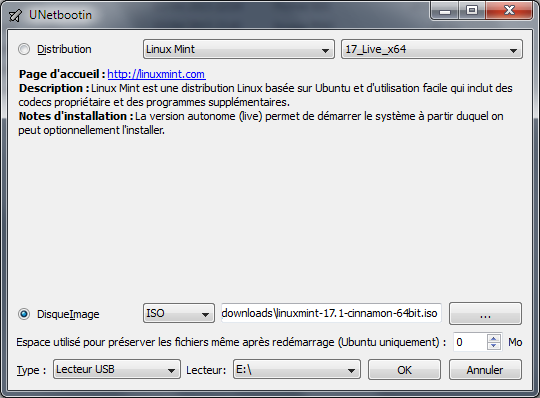- Bootable Iso Windows 10
- Steam Os Bootable Usb
- Steam Os Bootable Iso Windows 7
- Steam Os Iso File
- Download Bootable Iso Image

Not sure this belongs here or super user, but Steam recently made it to official release status for Linux. Are there any distributions yet of an instantly bootable Flashdrive image or something with Steam? Something like Ubuntu or something but with Steam and it's dependencies prepackaged and ready to either be installed or can be used directly from a flashdrive?
=Remember DO NOT TRY TO BOOT off this USB key on any computer you don't want to be WIPED OUT. The process is automatic and there are no options to stop it once it starts.=. /usr/bin/steam To. Point VirtualBox towards the SteamOS.iso file under the Storage options to “insert” the virtual disc in the virtual machine. (Click to enlarge.) Lastly, click on the Storage options button.
I ask this because I normally use Arch Linux. Steam apparently can work for it, but it's not supported and there are a million different hoops I'd have to jump through to get it to work. It'd be nice to just put an image on a thumbdrive and be able to try out Steam For Linux without touching my actual OS
Select the ISO file that you want to use in the Win32 Disk Imager window. Click on the symbol, and get the file selector (in the right bottom corner). Click on the symbol, and get the file selector (in the right bottom corner). A steam machine does not play games you need a gaming rig to stream from so let see you spend $2500 on an alienware steam box that does not play games only streams them.If steam os could be loaded. SteamOS is a Debian-based Linux distribution designed to run Valve's Steam and Steam games. It also provides a desktop mode (GNOME) which can run regular Linux applications. In addition to a stable Debian base, SteamOS features various third-party drivers and updated graphics stack, a newer Linux kernel with long-term support. After installation is complete, log onto the resulting system (using the Gnome session) with the predefined steam account. The password is steam. Run steam, accept the EULA, and let it bootstrap. Logoff the steam account; Log on with the desktop account. The password is desktop; From a terminal window, run /postlogon.sh.
EarlzEarlz1 Answer
Update: Steam ISO
One could have such an iso with Steam with very little effort. If you would like an iso with a lot more than just Steam added, you will have to wait a little while longer.
In the mean time and for your purposes simply installing Steam will suffice. Steam is after all available in the Ubuntu store and automatically installs its own dependencies. Since Ubuntu/Debian is where Steam is essentially made to work the best, it makes the most sense to use such a distro. You could grab any of the numerous already existing Debian based distros most of which incorporate the Ubuntu store and install Steam from there. It's really that easy. You could also download the .deb from steampowered.com and install it through the store that way.
There are other things that one using a Steam distro might also like to have such as controller support to which I cannot comment on existing support but I imagine most USB/USB dongle based controllers will work fine out of the box. Other than that, there might be various aesthetic things that one might like to see in a Steam distro such as icons/theme/wallpaper/login customizations. Thankfully that's all super easy to do on any Debian OS provided someone has already created something to your liking.
More specific to the question, you can make a persistent Ubuntu flash image that is bootable and simply install Steam on it. Plug it into any computer, boot it, install graphics drivers on host machine and load up Linux Steam.
If you have a 4-8+GB drive, you're all set. The larger than 4GB drive would help if you wanted to install games in the spare space for steam. If you had a 32GB drive, set the 4GB to linux persistent install and the rest is game space.
Steam can be set to run automatically at start like anything else once installed.
Alternatively, you could partition out ~30GB with GParted and install Ubuntu alongside your existing OS for testing purposes. There is the added benefit of the previous option being completely portable.
Even with the eventual arrival of SteamOS, it still holds true that it is extremely simple to set up nearly any Linux OS (primarily debian) with Steam though most would likely opt in for using the SteamOS instead (as would I - presumably - since it's not out yet) since it will have more features than simply distro + Steam.
SteamOS will be available for free as a Linux-based OS and will do everything you could need it to do including some claims of being able to play Windows/Mac games as well via a NVIDIA Shield-like streaming feature.
EnigmaEnigmaprotected by fredleyOct 1 '13 at 13:33
Thank you for your interest in this question. Because it has attracted low-quality or spam answers that had to be removed, posting an answer now requires 10 reputation on this site (the association bonus does not count).
Would you like to answer one of these unanswered questions instead?
Not the answer you're looking for? Browse other questions tagged steamlinux or ask your own question.

SteamOS
 View more stories
View more storiesTrue to its word, Valve has released a beta version of SteamOS, the Linux-based operating system that it will use to power its living room Steam Machine consoles. The release coincides with a lucky group of 300 public beta testers who were selected to actually receive Steam Machines to test on—the rest of us can still use the OS, but we'll have to bring our own hardware.
Valve had previously recommended that users who aren't 'intrepid Linux hackers' should wait a few more months before trying out SteamOS, but that's not going to stop Ars from barreling head first into the midst of things! We downloaded the OS as quickly as we could after it went live and spent some time getting it whipped into shape on fresh hardware. Contrary to Valve's warning, the install wasn't complex or scary at all—though if you've never installed Linux before, it might take you a bit out of your comfort zone.
The hardware
| Specs at a glance: The Ars Technica Steam Machine | |
|---|---|
| CPU | Intel Pentium G3220 (Haswell), dual-core, 3.0GHz |
| GPU | Zotac Geforce GTX660 (2GB) |
| RAM | 8GB DDR3-1600 |
| Motherboard | MSI H81I (mini-ITX) |
| Storage | Western Digital WD Blue 7200 rpm 500GB HD |
| Sound | Onboard |
| Network | Onboard (wired gigabit Ethernet) |
| PSU | Antec VP-450, 450W |
| Case | BitFenix Prodigy, arctic white |
Since we didn't receive a Steam Machine to test, we set out to build our own. Our goals were to stick to SteamOS hardware known to be good and to keep the price between $5-600. Andrew Cunningham, Kyle Orland, and I all stuck our heads together and came up with the configuration at right. All items were purchased from NewEgg, and the total prior to shipping was $562.93.
We certainly could have gone much higher if we'd been willing to spend real gaming PC money. However, to keep the price at least marginally competitive with next-gen console offerings, we backed several of the components down. We chose a dual-core Haswell Pentium instead of a more feature-loaded i5, 8GB of RAM instead of 16GB, and a spinny disk over an SSD. Fortunately, all of these components can be upgraded at any point—this is, after all, a PC.
On the other side of the fence, if $600-ish is too high, you could skim some cost off by going with previous-generation or lower-end components at the expense of future expandability. The place with the most 'give' is the video card. We stuck with the GTX660 because it's specifically called out in Valve's previously released Steam Machine specs (although we went with the 2GB model instead of 3GB). The types of games that we'll eventually be playing on this thing are, at least for now, well-known titles that have previously been out on other operating systems, so it's easy to target your video card to the type of gaming experience you want to have.
When we were planning the build, we had very little info on exactly what video drivers would be bundled with the SteamOS beta, so sticking with an Nvidia GPU that Valve itself was going to use in real Steam Machines was the safe option. Now that the operating system is out, here are Valve's official hardware requirements, from the SteamOS FAQ:
Bootable Iso Windows 10
- Intel or AMD 64-bit capable processor
- 4GB or more memory
- 500GB or larger disk
- NVIDIA graphics card (AMD and Intel graphics support coming soon)
- UEFI boot support
- USB port for installation
A brief word on the choice of controller
The other big part of the Steam Machine experience that we didn't have access to was the touchpad-equipped Steam Machine Controller. We'll be doing an extensive hands-on with a variety of games once they're available for normal non-Valve, non-beta testers to use, but for now we have to make do with traditional input methods.
For the Ars Steam Machine, we're going with a combination of a USB mouse and keyboard and a wired Xbox 360 controller. The keyboard is necessary to get the operating system installed, though SteamOS is designed to be driven by a gamepad after the install is complete. In my heart, though, I'm a PC gamer—I can't actually play PC games with a controller. Some folks can make that jump, but I've been doing it with a mouse and keyboard for too long to change. So, mouse and keyboard it is.
SteamOS
The SteamOS installer showed up on Valve's servers (ZIP) at about 17:20 CST on December 13, and downloading was a madhouse of slow speeds and rampant disconnects. Fortunately, Bittorrent came to the rescue, and after a while we were able to grab what we needed.
SteamOS is a customized Linux distro based not on Ubuntu, as was reported prior to its release, but rather on Debian Wheezy. Valve is maintaining its own SteamOS package repository (and is using these pre-installed packages). For now, the SteamOS beta is using version 3.10.11 of the Linux kernel. Other SteamOS customizations off of Debian include a heavily patched graphics compositor to link together SteamOS, Steam games, and the Steam in-game overlay. The operating system has been configured to pull its updates directly from Valve's repository. It also has a standard Gnome desktop environment hiding out beneath the Steam-y bits, which we'll get to.
If you're one of the 300 actual Steam Machine beta testers, you can report bugs and issues directly to Valve (and, if you're one of the 300 actual Steam Machine beta testers, you already know this). For the rest of us, Valve is hosting a community issue tracker on Github, where users can post issues. Unfortunately, the tracker's README file contains the following dispiriting information about how much of a response those postings will receive:
This issue tracker is meant for community support and requests for improvements; it will not be closely monitored by Valve while the Hardware Beta Test is running.
The installation
There are two different ways to get SteamOS installed on your system, which Valve has helpfully outlined on the 'build your own Steam Machine' page. The first is a fully automated method that restores the contents of a 2.7GB disk image onto your computer's hard disk drive. This method is simpler, but requires a much larger download; we skipped it in favor of the alternative.
That alternative, which Valve calls a 'custom installation,' involves using a UEFI-booting 960MB Debian-based installer to kick off a multi-step script-based process. It requires a bit more work, but it's not terribly daunting. After installing all of the SteamOS packages, this method relies on the user to boot into the OS and trigger scripts to create a restore partition of the completed install; in fact, the 2.7GB fully automated install is so much larger because it already contains the restore partition.
It's worth noting that both methods require you to have a computer that can boot via UEFI. The basis for the requirement isn't exactly clear yet, and at least one enterprising redditor has figured out how to hack around it and make an installer that works with a standard BIOS—though the consequences of actually following those instructions are unknown.
Steam Os Bootable Usb
One very important caveat: Both of the official install methods will erase your hard drive. At least for now, there is no way to dual-boot SteamOS or install it on a second hard drive. The installer is a Debian custom unattended install, which includes automatic partitioning of the computer's primary disk and then an automated OS install onto the new partitions. The larger, image-based method partitions the disk and then installs pre-created disk images onto those partitions. At least for now, the only way to get SteamOS onto a computer is to sacrifice that computer to Valve.
Steam Os Bootable Iso Windows 7
The custom install
We decided to try the smaller custom installer first, simply because it was faster to download. Unzipping the custom installer's zip file reveals the Debian installer files. We copied the whole mess onto a fresh FAT32-formatted USB stick and then booted up our test system.
Steam Os Iso File
The boot manager presented us with a few options. The instructions recommended picking the 'Automated Install' option and so, because this was our first time and we wanted to try to do it right before we started screwing with it, we followed the instructions. We also went back in later and ran through 'Expert install' mode; unfortunately, although they give you some more flexibility in what packages are installed, they don't allow you to customize the partition layout (which is what everyone seems to want).
After picking 'Automated Install,' the installer ran on its merry way and did a bunch of Debian-like things, partitioning our disk and installing its packages without any input from us. Total time for this first portion of the install was just over 19 minutes.